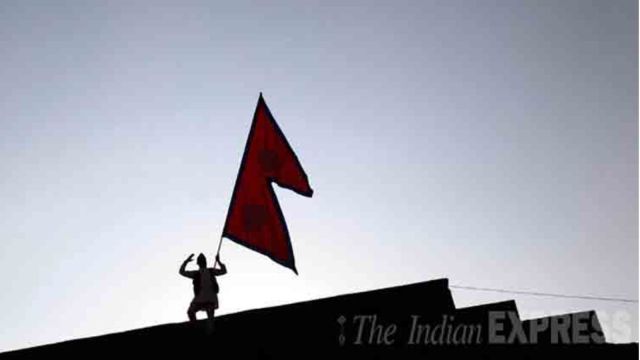
Written by Gunjan Singh
Nepalese politics and society are again in turmoil. The protests, in which two people have already died and 110 have been injured, are spearheaded by the royalist Rastriya Prajatantra Party (RPP). They are demanding the restoration of the monarchy under the leadership of the 78-year-old Gyanendra Shah, who had abdicated the throne two decades back under pressure to democratise Nepal. The pro-monarchy movement has been gaining momentum since Democracy Day on February 19.
The path to democratisation in Nepal has been a violent one. Nepal’s approximately 240 years of dynastic rule ended when Shah stepped down in 2008 in the face of protests, leading to the establishment of a secular republic, now led by the government of Prime Minister K P Sharma Oli. But in the past 17 years, Nepal has been governed by 13 prime ministers, not one lasting a full term, raising questions about the commitment of those leading the democratic apparatus. Domestic politics has been heavily polarised, and thus, rife with coalition politics. The resulting instability has contributed to the call for restoration of the monarchy. Today, the largest political parties in Nepal have formed a coalition, the Communist Party of Nepal (Unified Marxist–Leninist) and Nepal Congress (NC), effectively ending parliamentary opposition towards their policies and their grip on power.
Another major factor is the rise in corruption. The central leadership is facing multiple corruption charges. Top leaders have been accused of mishandling government funds. For example, Oli has a contempt case against him for violating a Supreme Court order barring the transformation of a tea estate into commercial plots. Three other former prime ministers are accused of illegally handing over government land to private individuals. This does not include three-time PM Prachanda and five-time PM Sher Bahadur Deuba, who too are accused of diverting government money and taking illegal commissions.
The Nepalese youth are also actively participating in the protests. No surprises here as the lack of job opportunities is pushing them to migrate to different countries. This number is stated to be around 1 million per year. As per the Nepal Living Standards Survey Report for 2022-23, published in 2024, just 32.4 percent of people were employed, a sharp drop from 67.2 per cent in 1995-96. The percentage of those not in the labour force shot up to 62.9 per cent from 29.4 per cent in 1995-96. This, coupled with a sluggish economy, adds to the woes of the general population.
Then there is Nepal’s geopolitics and its tilt towards China. Nepal has been central to the Belt and Road Initiative (BRI). A number of projects have been completed. This, however, has resulted in numerous challenges concerning repayment and debt, like the case of Pokhara Airport, which was built with Chinese investment, but has seen shoddy construction and poor planning. India has refused to allow the use of its airspace for flights operating out of Pokhara, given security concerns, adding to Nepal’s woes. Nepal has also clamped down on Tibetan refugees and even helped the Chinese monitor them.
There have been some voices within the government that have been pushing the blame onto New Delhi. But again, it appears to be an attempt to divert responsibility. Flawed governance, corruption scandals and a pro-China foreign policy have brought down the overall domestic and global standing of the current government. It needs to recognise that.
Gunjan Singh is associate professor, OP Jindal Global University. Views expressed are the author’s own and not those of the university